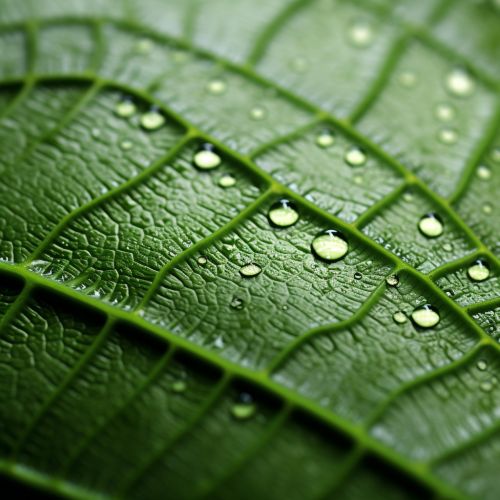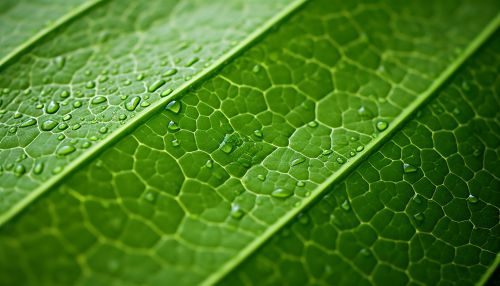Stomata
Introduction
Stomata are minute openings or pores found in the epidermis of plants. They play a crucial role in gaseous exchange and transpiration. Stomata are primarily responsible for the intake of carbon dioxide and the release of oxygen during photosynthesis.


Structure of Stomata
Stomata are surrounded by two specialized parenchyma cells known as guard cells. These guard cells control the opening and closing of stomata. Each stoma can be open or closed, depending on the shape of the guard cells.
Guard Cells
Guard cells are large crescent-shaped cells, two of which surround a stoma and are connected at both ends. They are produced by the division of a mother cell. The inner wall of the guard cell (towards the stoma) is thicker than the outer wall.
Stoma
The stoma is the actual pore of the stomata. It is through this pore that the exchange of gases takes place. The size of the stoma is directly proportional to the water status of the plant. When the plant has sufficient water, the stoma is wide open, but when the plant is under water stress, the stoma closes to prevent further water loss.
Function of Stomata
Stomata perform two main functions - they allow for gas exchange and water vapor loss, also known as transpiration.
Gas Exchange
During photosynthesis, carbon dioxide enters the plant through the stomata present on the leaf surface. Oxygen, a by-product of photosynthesis, exits the plant via these same stomata. This process of gas exchange is vital for the survival and growth of the plant.
Transpiration
Transpiration is the process of water movement through a plant and its evaporation from aerial parts, such as leaves, stems and flowers. Water is necessary for plants but only a small amount of water taken up by the roots is used for growth and metabolism. The remaining 97–99.5% is lost by transpiration and guttation.
Regulation of Stomatal Opening and Closing
The opening and closing of stomata are regulated by factors such as light, plant carbon dioxide levels, and changes in environmental conditions.
Light
Light is a major factor controlling the opening and closing of stomata. Stomata are open during the day because this is when photosynthesis typically occurs. At night, when photosynthesis is not happening, stomata are usually closed.
Plant Carbon Dioxide Levels
The concentration of carbon dioxide within the plant also affects stomatal operation. When the plant has a high internal concentration of carbon dioxide, the stomata close to prevent additional intake. Conversely, when the plant's internal carbon dioxide levels are low, the stomata open to allow for additional intake.
Environmental Conditions
Changes in environmental conditions such as temperature, humidity, and wind speed can also affect the operation of stomata. For example, in high temperatures, the stomata may close to reduce water loss.
Stomatal Distribution
Stomata are typically more numerous on the underside of leaves than on the top side. This is because the lower surface of the leaf is less exposed to heat and sun, reducing water loss. However, the distribution of stomata varies among different plant species and can even vary within a single plant, depending on the environmental conditions.
